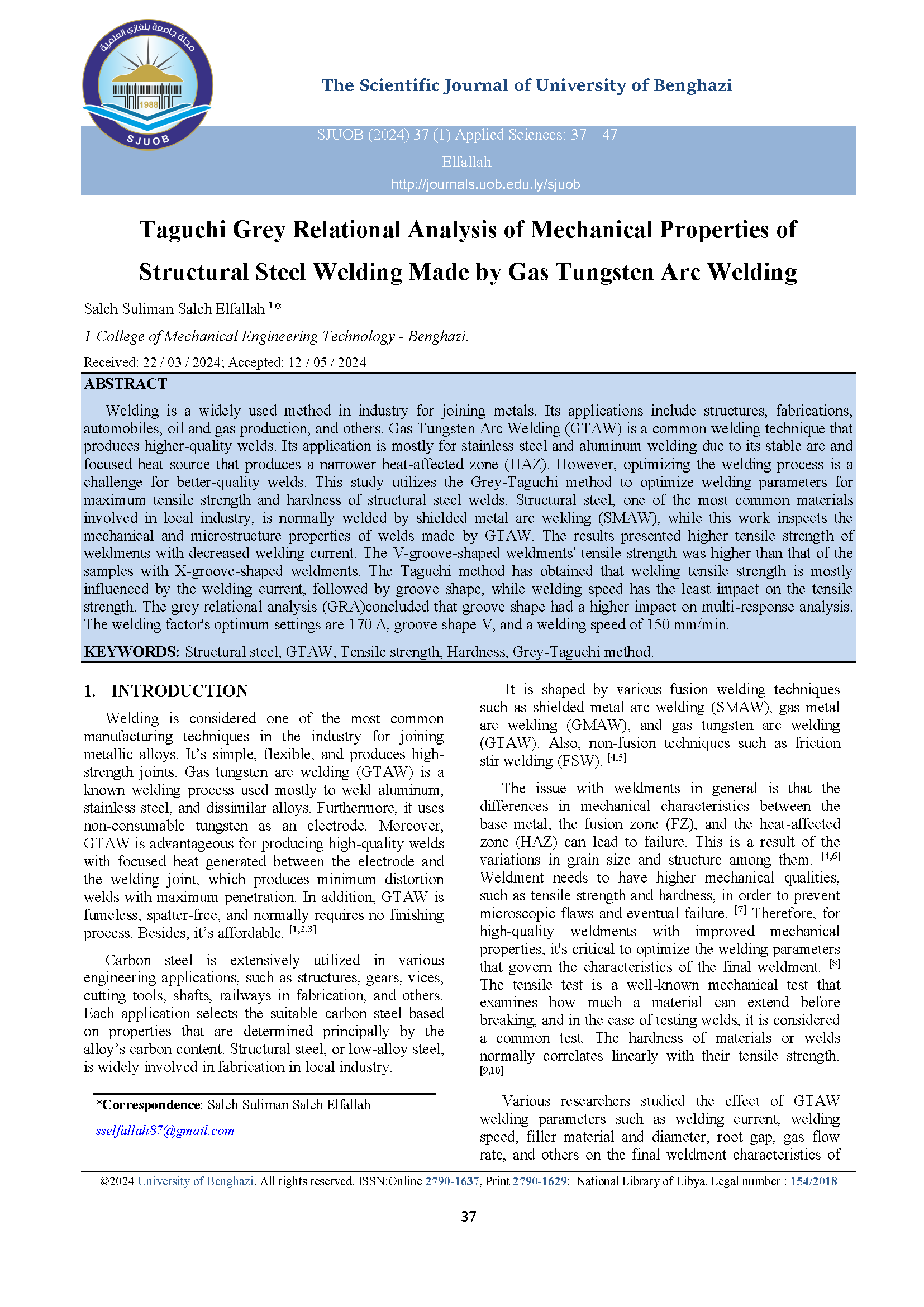Taguchi Grey Relational Analysis of Mechanical Properties of Structural Steel Welding Made by Gas Tungsten Arc Welding
DOI:
https://doi.org/10.37376/sjuob.v37i1.5938Keywords:
Structural steel, GTAW, Tensile strength, Hardness, Grey-Taguchi methodAbstract
Welding is a widely used method in industry for joining metals. Its applications include structures, fabrications, automobiles, oil and gas production, and others. Gas Tungsten Arc Welding (GTAW) is a common welding technique that produces higher-quality welds. Its application is mostly for stainless steel and aluminum welding due to its stable arc and focused heat source that produces a narrower heat-affected zone (HAZ). However, optimizing the welding process is a challenge for better-quality welds. This study utilizes the Grey-Taguchi method to optimize welding parameters for maximum tensile strength and hardness of structural steel welds. Structural steel, one of the most common materials involved in local industry, is normally welded by shielded metal arc welding (SMAW), while this work inspects the mechanical and microstructure properties of welds made by GTAW. The results presented higher tensile strength of weldments with decreased welding current. The V-groove-shaped weldments' tensile strength was higher than that of the samples with X-groove-shaped weldments. The Taguchi method has obtained that welding tensile strength is mostly influenced by the welding current, followed by groove shape, while welding speed has the least impact on the tensile strength. The grey relational analysis (GRA)concluded that groove shape had a higher impact on multi-response analysis. The welding factor's optimum settings are 170 A, groove shape V, and a welding speed of 150 mm/min.
Downloads

Downloads
Published
How to Cite
Issue
Section
License
Copyright (c) 2024 The Scientific Journal of University of Benghazi

This work is licensed under a Creative Commons Attribution-NonCommercial-NoDerivatives 4.0 International License.


















